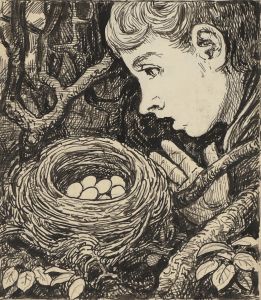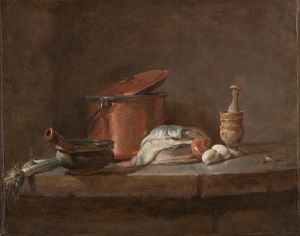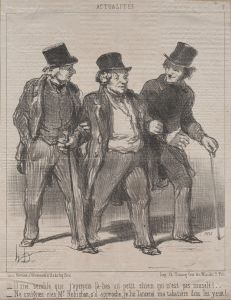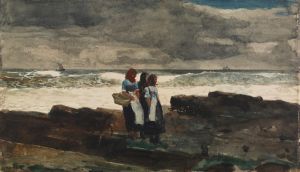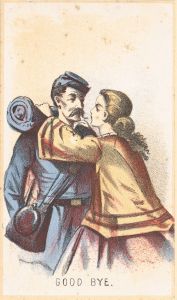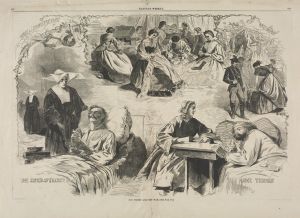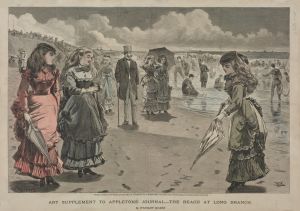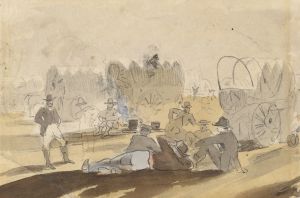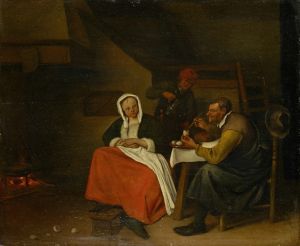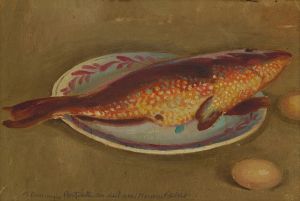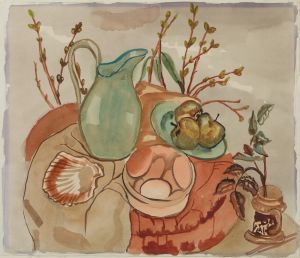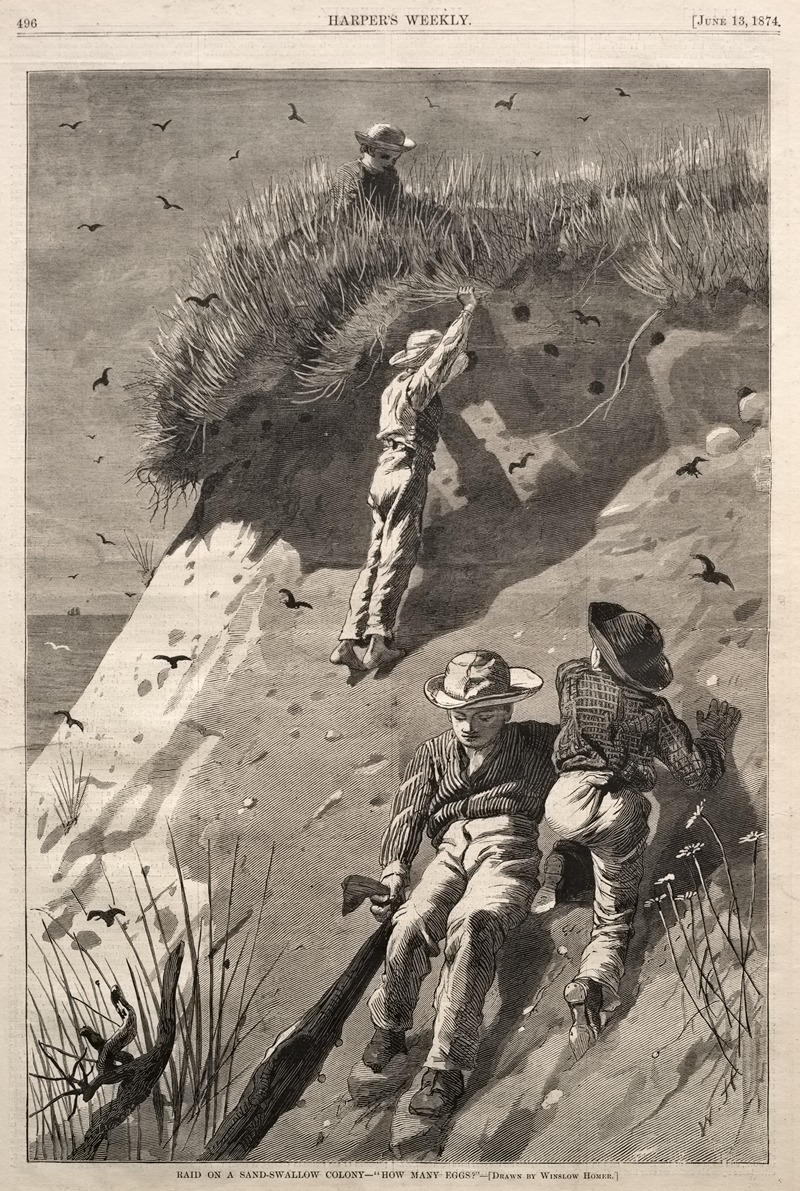
Raid on a Sand-Swallow Colony – ‘How Many Eggs’
A hand-painted replica of Winslow Homer’s masterpiece Raid on a Sand-Swallow Colony – ‘How Many Eggs’, meticulously crafted by professional artists to capture the true essence of the original. Each piece is created with museum-quality canvas and rare mineral pigments, carefully painted by experienced artists with delicate brushstrokes and rich, layered colors to perfectly recreate the texture of the original artwork. Unlike machine-printed reproductions, this hand-painted version brings the painting to life, infused with the artist’s emotions and skill in every stroke. Whether for personal collection or home decoration, it instantly elevates the artistic atmosphere of any space.
Winslow Homer, an influential American artist known for his landscape and marine subjects, created the painting "Raid on a Sand-Swallow Colony – ‘How Many Eggs’" in 1871. This work is part of Homer's exploration of themes related to nature and human interaction with the environment, which he frequently depicted throughout his career.
The painting captures a scene of young boys engaged in the activity of raiding a sand-swallow colony. Sand swallows, also known as bank swallows, are small birds that nest in colonies along sandy banks and cliffs. The title of the painting, "How Many Eggs," suggests a focus on the collection or counting of bird eggs, a pastime that was not uncommon among children in the 19th century. This activity reflects a period when natural history and the study of birds were popular pursuits, although it also raises questions about the impact of human activities on wildlife.
Homer's work is characterized by its attention to detail and ability to convey the essence of a scene. In "Raid on a Sand-Swallow Colony," he employs his skills to depict the boys in action, capturing their youthful energy and curiosity. The painting is notable for its composition and use of color, which help to create a vivid and dynamic image. The natural setting is rendered with Homer's typical precision, highlighting his keen observation of the natural world.
The painting was created during a time when Homer was transitioning from his earlier work as an illustrator to becoming a full-time painter. This period in his career was marked by a growing interest in outdoor scenes and the depiction of everyday life. Homer's ability to portray the nuances of human interaction with nature is evident in this work, as he balances the innocence of childhood exploration with the underlying implications of their actions on the environment.
"Raid on a Sand-Swallow Colony – ‘How Many Eggs’" is part of a broader body of work by Homer that examines the relationship between humans and nature. His paintings often reflect a deep appreciation for the natural world, while also acknowledging the complexities and sometimes destructive tendencies of human behavior. This duality is a recurring theme in Homer's art, making his work both visually compelling and thought-provoking.
The painting is housed in the collection of the Portland Museum of Art in Portland, Maine. It remains an important example of Homer's early work and his evolving style as an artist. Through this piece, Homer contributes to the broader narrative of American art in the 19th century, capturing a moment in time that resonates with themes of exploration, curiosity, and the impact of human activities on the natural world.





